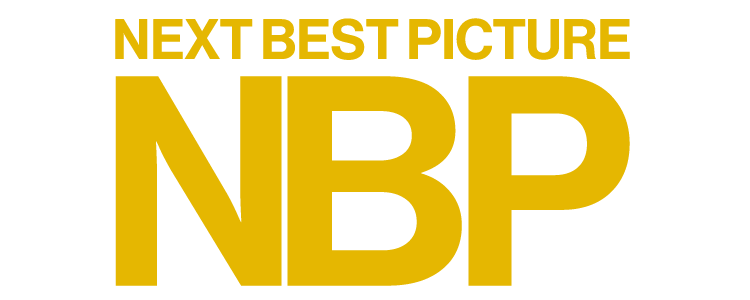THE STORY – Based on Robert Macfarlane’s bestselling book, “Underland” is a cinematic voyage beneath the surface of the Earth.
THE CAST – Sandra Hüller
THE TEAM – Robert Petit (Director/Writer) & Robert Macfarlane (Writer)
THE RUNNING TIME – 79 Minutes
From the very first frame of “Underland,” it’s clear that this is not just a documentary – it’s a descent, a pilgrimage into the deep unknown. Adapted from Robert Macfarlane’s acclaimed book and brought to life by director Robert Petit, “Underland” doesn’t simply depict underground spaces – it inhabits them. It whispers ancient myths, digs through scientific frontiers, and listens to the heartbeat of the Earth itself.
The film begins not with spectacle but with simplicity, opening with the image of an old ash tree, projected in stunning black and white like a scene from a silent film. Its silhouette sways like a memory as Sandra Hüller’s narration enters with a calm, dreamlike cadence. The “Anatomy of a Fall“ actor draws us gently down the old ash tree, through its soil and roots, in a moment that feels as surreal as Alice tumbling into Wonderland. But unlike Carroll’s fantastical world, what we find beneath is very real.
This cinematic meditation dares to ask: “Why do we seek the void?”. It’s a poetic question that echoes throughout the film’s runtime like a refrain. From sacred Mayan caves in the Yucatán to the flooded underbelly of Las Vegas and a subterranean science lab buried deep beneath Canadian rock, “Underland“ connects disparate geographies through one shared impulse: the human drive to go beneath the surface. Each location is both specific and symbolic, and Petit’s transitions between them are seamless, mirroring how one story, one environment, bleeds into another.
We meet three main figures, each an explorer of a different kind, and each offering a unique lens on what it means to descend. In Las Vegas, an urban explorer and former archaeologist, Bradley Garrett, descends into a storm drain beneath the Strip. His description of the sensory overload – smells, textures, sounds – grounds us in the physical, even as his musings lift us into the philosophical. He calls the drain a “cave in the making,“ drawing a subtle thread to the ancient spaces we see in Mexico.
There, we follow Fátima Tec Pool, an archaeologist who brings both personal and cultural reverence to her work in Mayan caves, spaces once believed to be entrances to the underworld. For Pool, exploration is not just about discovery; it’s about reconnection. Her ancestry, land, and work are all intertwined in a quiet search for continuity across time.
Then, in the film’s most surreal turn, we enter a deep laboratory two kilometers beneath the surface of Canada. Mariangela Lisanti, a theoretical physicist, searches here for dark matter—particles that cannot be seen or touched yet are believed to shape the universe. In an environment of humming machinery and industrial tunnels, we are reminded that the underworld is not always ancient. It’s also the future.
What binds these explorers is not just curiosity but necessity. “Underland“ suggests that to understand our present and perhaps survive it, we must reckon with what lies beneath: the buried stories of civilizations, the literal roots of our ecosystems, the dark spaces where discarded people and objects go, and the subterranean frontiers of science.
Visually, the film is nothing short of stunning. Cinematographer Ruben Woodin Dechamps captures the alien beauty of the deep with an almost otherworldly sensibility. The film resembles science fiction in some scenes, particularly in the sterile labs of SNOLAB or the pulsating root systems of Mexico’s cenotes. But this is nothing fictional. This is the real, hidden Earth, rendered with a reverence that invites awe rather than fear. The sound design, too, deserves praise: pulsating roots, echoing droplets, and even silence are used like instruments in a slow, immersive symphony.
The final piece of this glorious symphony is Hüller’s narration, which is perfectly infrequent. It is only used when it is needed and with poetic restraint. She doesn’t explain so much as evoke. Her voice is soft but firm, curious but calm – necessary for a film as meditative as it is revelatory. At times, it feels like she is reading scripture from a lost world or reciting a bedtime story meant to both soothe and stir.
Of course, “Underland” isn’t without its limitations. Its relatively short runtime means that some tantalizing glimpses—a diver discovering a skull underwater or explorers crawling through ice caves in search of frozen history—are narrative fragments rather than fully realized segments. One leaves the film wanting more time in these worlds, more voices, and more answers to the questions it so beautifully poses.
“Underland“ feels like a rare kind of documentary: immersive, philosophical, visually breathtaking, and existential. It’s an invitation not just to explore but to remember that the ground we walk on is alive, storied, and sacred. “Underland” isn’t just a journey through physical space – it’s a metaphysical excavation. It digs into the human psyche, uncovering our compulsion to burrow into the dark not for escape but for truth. Petit has created a cinematic incantation, a reverent ode to the silence, danger, beauty, and history that exist just beneath our feet. In looking below, it changes how we see everything above.


